Do you have a question about the Lincoln 2002 Blackwood and is the answer not in the manual?
Warning about chemicals in vehicle exhaust and components.
Explains various symbols used on the vehicle and in the manual.
Details the layout and components of the instrument cluster.
Explains the meaning of dashboard warning lights and chimes.
Description of various gauges like fuel, speed, coolant, and oil pressure.
Operation of headlamps, fog lamps, and flash-to-pass features.
Adjusts the brightness of the instrument panel lighting.
How to adjust the accelerator and brake pedals.
Operation of the rear window defroster system.
Location and use of the vehicle's power outlets.
How to set and adjust the vehicle's clock.
Explains the function and operation of the reverse sensing system.
Operation of the vehicle's audio system, including radio and CD player.
How to turn the audio system on/off and adjust volume.
How audio volume automatically adjusts with vehicle speed.
Selecting AM/FM bands and memory presets for the radio.
Adjusting radio frequency or CD track selection.
Finding radio stations, tape selections, or CD tracks.
Scanning radio bands or tape/CD selections.
Setting and using radio station memory presets.
Automatically setting strong radio stations to memory presets.
Adjusting the bass output of the audio system.
Adjusting the treble output of the audio system.
Adjusting sound distribution between left and right speakers.
Adjusting sound distribution between front and rear speakers.
Switching between tape and CD playback modes.
Function of the rewind control for tape and CD playback.
Function of the fast forward control for tape and CD playback.
Selecting the alternate side of a tape for playback.
Stopping and ejecting a tape from the player.
Reducing hiss and static during tape playback.
Adjusting CD playback for a more consistent listening level.
Playing CD tracks in random order.
Instructions for setting the vehicle's clock.
Receiving text information from RDS-equipped FM stations.
Selecting radio program types for tuning.
Selecting display options for RDS feature (Type, Name, None).
Muting the audio system and returning to playback.
Adjusting audio signal modes for different listening tastes.
Controls for rear seat passengers to listen to different media.
How to increase or decrease audio volume.
Enabling or disabling the rear audio speakers.
Connecting and using headphones with the audio system.
Selecting audio sources like AM, FM, Tape, CD.
Scrolling through memory presets or advancing CD changer discs.
Finding listenable stations or tape/CD selections.
Information about the integrated rear window antenna.
Location and operation of the CD changer.
Solutions for common CD changer issues like sound skips.
Instructions for cleaning CDs to ensure proper playback.
Guidelines for handling and maintaining CDs and the changer.
Instructions for cleaning the cassette player head.
Guidelines for cassette tape usage and player care.
Information on AM/FM broadcast frequencies.
Factors affecting radio reception quality.
Overview of the climate control system operation.
Steps to activate the Electronic Automatic Temperature Control.
Steps to deactivate the Electronic Automatic Temperature Control.
How the climate system automatically controls airflow and temperature.
How to select and display desired cabin temperatures.
Switching between Fahrenheit and Celsius temperature displays.
Adjusting fan speed manually or automatically.
Selecting airflow direction for heating and cooling.
How to display the current outside air temperature.
Advice for optimizing climate control system usage.
Operation of climate controls located in the rear console.
Explains the different ignition key positions and their functions.
Information about the vehicle's master and valet keys.
Operation of the left and right turn signals.
How to use the cruise control system.
Controls on the steering wheel for audio and climate functions.
Adjusting the steering wheel's tilt position.
Operation of the hazard warning lights.
Operation of windshield wipers and washers.
How wiper speed adjusts automatically with vehicle speed.
Activating and deactivating the overdrive transmission feature.
Features located in the overhead console, like trip computer.
Information displayed and selected on the trip computer.
Options for customizing trip computer display (e.g., English/metric).
Selecting different features on the trip computer display.
Adjusting the compass to the correct magnetic zone.
Calibrating the compass if it shows incorrect heading.
Operating the moon roof for opening, closing, or venting.
Operating the powered tonneau cover.
Operation of interior courtesy and map lamps.
Operation of rear door courtesy lamps.
Function and operation of the auto-dimming rear view mirror.
Turning on the visor mirror lamps.
Programming and operating the HomeLink system for garage doors.
How to reprogram a HomeLink button for a new device.
Operating the vehicle's power windows.
Locking or unlocking all window controls.
Features for one-touch operation of the driver's window.
How window switches operate after ignition is off.
Locking and unlocking vehicle doors.
Engaging and disengaging childproof door locks.
Adjusting and positioning power side view mirrors.
Retracting or extending the side view mirrors.
How turn signals activate the mirror housing lights.
Function of heated mirrors for defrosting.
Proper installation and use of the driver floor mat.
Opening and closing the tailgate dual-doors.
Accessing and using the pickup box storage compartments.
Operating the powered hard tonneau cover.
How the anti-theft system immobilizes the engine.
Location and function of the theft indicator light.
How the anti-theft system arms automatically.
How to disarm the anti-theft system with a coded key.
Details about coded keys and preventing starting issues.
Instructions for programming new vehicle keys.
Operation of the remote entry system for doors and tonneau.
How to unlock the driver door and all doors remotely.
Remotely opening the power tonneau cover.
Locking all vehicle doors and confirming closure.
Feature to prevent unauthorized entry after locking.
Activating and deactivating the panic alarm.
Steps for replacing the battery in the remote transmitter.
Procedures for replacing lost or purchasing new transmitters.
How to program multiple remote transmitters.
Automatic locking of doors when vehicle is in motion.
How the autolock feature repeats after door use.
Procedure to enable or disable the autolock function.
How interior lights turn on with remote unlock.
Programming and recalling seat, mirror, and pedal positions.
Using the keypad to lock/unlock doors and open tonneau.
Prevents repeated attempts to enter a valid key code.
Steps to set a custom code for the keyless entry keypad.
Using the keypad to unlock the driver or all doors.
Operating the tonneau cover using the keyless entry keypad.
Locking all doors using the keyless entry keypad.
Enabling or disabling the autolock feature via keypad.
Adjustments for front seats, head restraints, and power seats.
Adjusting the lumbar support for seat comfort.
Programming and recalling seat, mirror, and pedal positions.
Operation of heated or cooled seats.
How to replace the air filter for climate controlled seats.
Adjustments for rear seats and head restraints.
Instructions for folding rear seats into the load floor.
How to return folded seats to their upright position.
General precautions and guidelines for safety restraint usage.
How to properly fasten and unfasten seat belts.
Normal seat belt locking mode responding to vehicle movement.
Pre-locked seat belt mode for child seats or manual locking.
Conditions requiring the automatic seat belt locking mode.
Procedures to switch from automatic to vehicle sensitive locking.
How seat belt pretensioners reduce webbing in a collision.
Adjusting shoulder belt height for optimal positioning.
Information on obtaining and using seat belt extensions.
How the seat belt warning system alerts occupants.
Supplemental warning feature for unbuckled seat belts.
Overview of the supplemental restraint system and its components.
Safety precautions regarding children and air bag deployment.
Explanation of the air bag system's activation criteria.
Guidelines for properly using safety restraints for children.
Proper use of safety belts and child safety seats for children.
Steps for installing child seats using vehicle seat belts.
Location and use of tether anchor straps and brackets.
Installing child seats using LATCH system anchors.
Pre-start checks and safety precautions before starting the engine.
Step-by-step instructions for starting the vehicle's engine.
Safety measures to avoid hazardous exhaust fumes.
Information on self-adjusting brakes and potential noises.
Explanation of the ABS system and its operation.
Meaning of the ABS warning light and when to service.
How to maximize ABS efficiency during emergency braking.
How to set and release the parking brake.
Operation and maintenance of the power steering system.
How the air suspension system improves ride and handling.
Meaning of the air suspension warning light.
How the traction control system maintains stability and steerability.
How the traction-lok axle provides added traction on slippery surfaces.
Special considerations for driving utility vehicles and rollover risks.
Explanation of the automatic transmission and its features.
How the brake pedal must be depressed to shift gears.
Explanation of P, R, N, D, and overdrive positions.
How to achieve better acceleration through downshifting.
Important terms and considerations for loading the vehicle.
How to determine the vehicle's maximum cargo and towing capacity.
Guidelines and safety precautions for towing trailers.
Ensuring proper equipment and attachment for trailer towing.
Procedure for using a load equalizing hitch.
Proper connection of trailer safety chains.
Requirements and safety for trailer brake systems.
Requirements for trailer lighting systems.
Precautions and tips for driving with a trailer.
Recommended maintenance intervals after towing.
General advice for safe trailer towing procedures.
Guidelines for launching or retrieving a boat with a trailer.
Guidelines for towing a vehicle with all wheels on the ground.
Precautions and procedures for driving through water.
Information on Ford's complimentary roadside assistance program.
List of services covered by roadside assistance.
How to use roadside assistance services and contact numbers.
Operation of hazard warning lights in emergencies.
Locating and resetting the fuel pump shut-off switch.
Information on fuses, their ratings, colors, and locations.
Table detailing fuse ratings, types, and corresponding colors.
Location and access to the passenger compartment fuse panel.
Description of the power distribution box and its fuses.
Procedure for safely changing a flat tire.
Details about the spare tire and its location.
How to remove the jack and tools for tire changing.
Steps for detaching and removing the spare tire.
How to properly store the spare tire after use.
Detailed steps for safely changing a vehicle tire.
Safety precautions and procedure for jump starting a vehicle.
Steps to prepare the vehicle for jump starting.
Correct procedure for connecting jumper cables to batteries.
Correct procedure for disconnecting jumper cables.
Recommendations and procedures for professional towing services.
Guidance on routine service and using recommended parts.
General safety measures to follow during vehicle servicing.
Safety steps for working on the vehicle with the engine off.
Safety steps for working on the vehicle with the engine running.
Steps to open the vehicle's hood.
Locating key components within the engine compartment.
Instructions for checking and adding engine oil.
Steps for adding engine oil and oil/filter recommendations.
Specific recommendations for engine oil type and API certification.
Checking and adding brake fluid, and DOT 3 specification.
Procedures for checking and refilling brake fluid levels.
Checking and adding windshield washer fluid.
Checking engine coolant level and concentration.
Guidelines for checking coolant level and concentration.
Steps for adding engine coolant, including color types and mixing.
Ford's recommendations regarding recycled engine coolant.
Information on the cooling system's fluid capacity.
Coolant concentration adjustments for extreme cold or hot climates.
How the fail-safe cooling feature operates when coolant is low.
Explanation of engine behavior and limitations in fail-safe mode.
Driving precautions and steps to take when fail-safe mode is active.
Procedures for checking and refilling power steering fluid.
Checking automatic transmission fluid levels.
Steps for checking transmission fluid at normal operating temperature.
Maintenance requirements for driveline components.
Information on the vehicle's maintenance-free battery.
Procedures for changing the air filter element.
Step-by-step guide for replacing the air filter.
Checking wiper blades for wear and cleaning them.
How to clean windshield wiper blades for optimal performance.
Instructions for replacing worn windshield wiper blades.
Explanation of tire quality grades (Treadwear, Traction, Temperature).
Explanation of the treadwear grade rating for tires.
Tire traction grades representing ability to stop on wet pavement.
Tire temperature grades for heat resistance and dissipation.
Procedures for checking tire pressure and rotation.
How to check tire pressure accurately when tires are cold.
Procedure for rotating tires to ensure even wear.
When and how to replace vehicle tires.
Guidelines for using snow tires and chains.
Important safety precautions when handling automotive fuels.
Safety advice for refueling and handling fuels.
Recommended octane rating for optimal engine performance.
Tips for improving fuel quality and addressing starting issues.
Ford's endorsement of reformulated cleaner-burning gasolines.
Effects of running out of fuel and how to refuel.
Proper installation and replacement of the fuel filler cap.
Information on fuel filter replacement and warranty.
Techniques for measuring and improving vehicle fuel economy.
How to accurately measure vehicle fuel economy.
Guidelines for filling the fuel tank consistently.
Methods for calculating fuel economy based on odometer and fuel used.
Tips on driving habits to improve fuel efficiency.
Driving habits that affect fuel economy.
Key maintenance practices for optimal fuel economy.
Factors like load and driving environment affecting fuel economy.
Understanding the EPA window sticker for fuel economy comparisons.
Ensuring proper function of emission control components.
How to prepare the vehicle's diagnostics system for I/M testing.
Information on replacing exterior and interior bulbs.
General guidance on replacing exterior lighting bulbs.
Steps for replacing headlamp bulbs.
How to replace parking and turn signal bulbs.
Procedure for replacing foglamp bulbs.
How to replace tail, turn, and backup lamp bulbs.
Procedure for replacing rear cornering and backup lamp bulbs.
Steps for replacing the high-mount brakelamp bulb.
Procedure for replacing license plate lamp bulbs.
How to check and replace interior lighting bulbs.
Specifications and trade numbers for replacement bulbs.
Instructions for aiming headlamps using the VHAD system.
Procedure for adjusting the horizontal aim of headlamps.
Procedure for adjusting the vertical aim of headlamps.
General guidelines for washing and cleaning the vehicle exterior.
Proper techniques for washing the vehicle's exterior.
How to flush the vehicle's underbody frequently.
Using paint sealants and avoiding excessive wax.
How to repair minor paint chips and damage.
How to clean aluminum wheel rims and covers safely.
Proper procedures for cleaning the engine and compartment.
Cleaning plastic exterior parts using approved products.
How to clean plastic exterior lamps without scratching.
Cleaning mirrors and reflective surfaces without abrasives.
How to clean glass surfaces and wiper blades properly.
How to clean the instrument panel safely.
How to clean the instrument cluster lens.
Instructions for cleaning inside windows to prevent fogging.
Cleaning wood-tone trim using a soft cloth and cleaner.
Removing stains and soil from interior fabric surfaces.
Proper cleaning and care for leather seating surfaces.
How to clean safety belts without weakening the webbing.
Lists part numbers for various vehicle components and fluids.
Specifies fluid capacities for brake, coolant, oil, fuel, and transmission.
Details Ford part names, numbers, and specifications for lubricants.
Technical specifications for the vehicle's engine.
Exterior dimensions of the vehicle in millimeters and inches.
Information on locating the certification label and VIN.
Details found on the vehicle's certification label.
Location and significance of the vehicle identification number.
Location of the engine number on the block and transmission.
Information on optional service contracts for extended coverage.
Information on obtaining service at dealerships and authorized shops.
Guidance for vehicle service when at home or away.
Information about the arbitration program for warranty disputes.
Types of warranty concerns eligible for review by the Board.
Composition and purpose of the Dispute Settlement Board.
Information required for case review by the Board.
Option to make an oral presentation to the Board.
How the Board makes decisions and the binding nature of awards.
How to obtain the Dispute Settlement Board application.
Information on the Canadian Motor Vehicle Arbitration Plan (CAMVAP).
Advice for vehicle owners traveling internationally.
Information on genuine Ford accessories and their warranties.
Information on vehicle security features like wheel locks.
Comfort and convenience features like air filtration and cargo nets.
Information on travel-related accessories like bike carriers.
Accessories for vehicle protection and appearance.
How to order additional owner's literature from Helm, Inc.
California consumer rights regarding vehicle repairs and lemon law.
How to report vehicle defects to NHTSA and Ford.
| Brand | Lincoln |
|---|---|
| Model | 2002 Blackwood |
| Category | Automobile |
| Language | English |

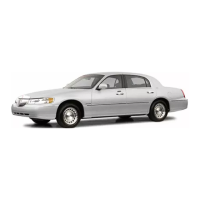
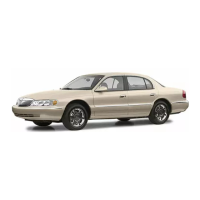

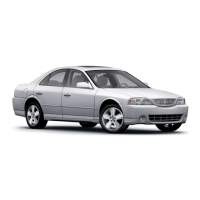
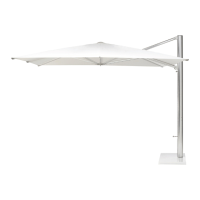
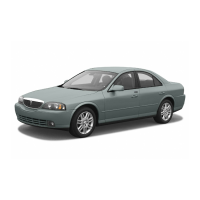




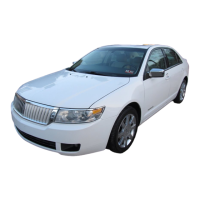
